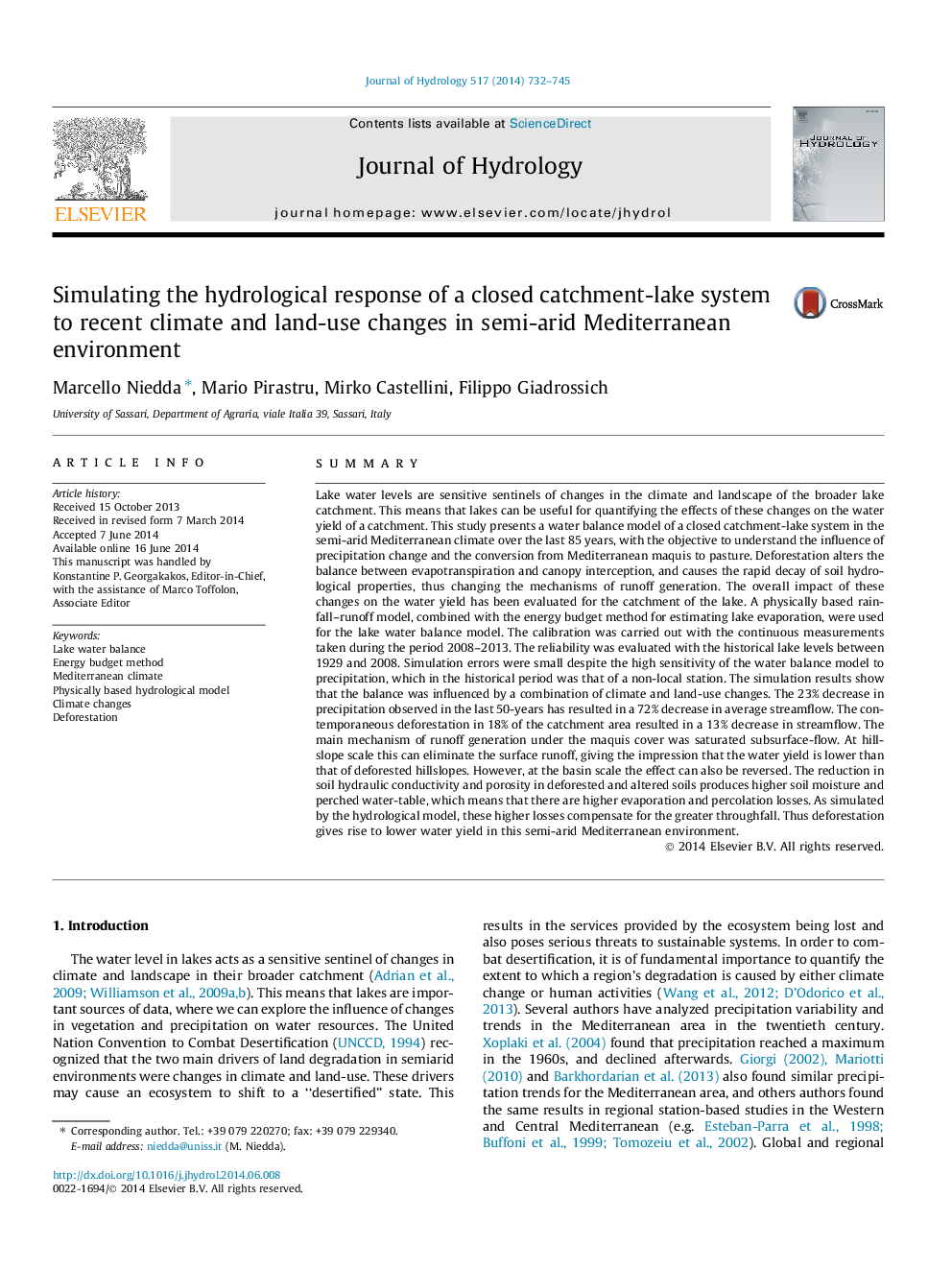| کد مقاله | کد نشریه | سال انتشار | مقاله انگلیسی | نسخه تمام متن |
|---|---|---|---|---|
| 6413022 | 1629931 | 2014 | 14 صفحه PDF | دانلود رایگان |
- Water balance model of a closed catchment-lake system was calibrated and evaluated.
- A physically based rainfall-runoff model and the energy budget method were used.
- Precipitation, land-use and water yield changes in semiarid Mediterranean quantified.
- Precipitation was the main driver of the multi-year streamflow variability.
- Change from maquis to deforested and altered soil slightly decreased water yield.
SummaryLake water levels are sensitive sentinels of changes in the climate and landscape of the broader lake catchment. This means that lakes can be useful for quantifying the effects of these changes on the water yield of a catchment. This study presents a water balance model of a closed catchment-lake system in the semi-arid Mediterranean climate over the last 85Â years, with the objective to understand the influence of precipitation change and the conversion from Mediterranean maquis to pasture. Deforestation alters the balance between evapotranspiration and canopy interception, and causes the rapid decay of soil hydrological properties, thus changing the mechanisms of runoff generation. The overall impact of these changes on the water yield has been evaluated for the catchment of the lake. A physically based rainfall-runoff model, combined with the energy budget method for estimating lake evaporation, were used for the lake water balance model. The calibration was carried out with the continuous measurements taken during the period 2008-2013. The reliability was evaluated with the historical lake levels between 1929 and 2008. Simulation errors were small despite the high sensitivity of the water balance model to precipitation, which in the historical period was that of a non-local station. The simulation results show that the balance was influenced by a combination of climate and land-use changes. The 23% decrease in precipitation observed in the last 50-years has resulted in a 72% decrease in average streamflow. The contemporaneous deforestation in 18% of the catchment area resulted in a 13% decrease in streamflow. The main mechanism of runoff generation under the maquis cover was saturated subsurface-flow. At hillslope scale this can eliminate the surface runoff, giving the impression that the water yield is lower than that of deforested hillslopes. However, at the basin scale the effect can also be reversed. The reduction in soil hydraulic conductivity and porosity in deforested and altered soils produces higher soil moisture and perched water-table, which means that there are higher evaporation and percolation losses. As simulated by the hydrological model, these higher losses compensate for the greater throughfall. Thus deforestation gives rise to lower water yield in this semi-arid Mediterranean environment.
Journal: Journal of Hydrology - Volume 517, 19 September 2014, Pages 732-745
